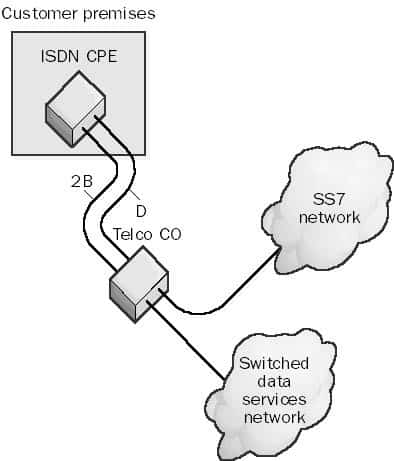The evolution of Integrated Services Digital Network (ISDN) marks a significant leap in telecommunications, blending traditional telephony with the digital era. Central to this evolution is the D Channel, a specialized channel in ISDN architecture. Unlike its counterparts that primarily handle voice and data traffic, the D Channel is uniquely designated for signaling and control purposes. It plays a pivotal role in the efficient management and routing of ISDN services, serving as the nerve center for communication between user equipment and the network. This channel’s introduction brought about enhanced capabilities in telecommunication systems, such as improved call setup and better service features, making it a cornerstone of modern digital networking.
Index
- What is D Channel?
- How it Works
- D Channel in ISDN Communication
- Legacy of D Channel in Digital Communications
- References

1. What is D Channel?
The D Channel, often termed the “Delta Channel,” represents a fundamental component of ISDN’s layered structure. Historically, its development coincided with the rise of digital telecommunication systems, aiming to optimize signal transmission and network management. Technically, the D Channel operates distinctively from the Bearer (B) Channels of ISDN. While B Channels are dedicated to voice and data transfer, the D Channel is reserved for signaling and control information, facilitating functions like call establishment, termination, and feature activation.
In terms of specifications, the D Channel differs between the Basic Rate Interface (BRI) and Primary Rate Interface (PRI) configurations of ISDN. In BRI, it typically operates at a rate of 16 kbps, while in PRI, its capacity is increased to 64 kbps, reflecting the greater demands of larger-scale operations. This distinction underlines the adaptability of the D Channel across different scales of ISDN deployments.
Compared to other channels, the D Channel’s uniqueness lies in its non-traffic nature. It does not carry the content of communications (like voice or data) but instead efficiently manages the routing and setup of these communications across the network. Its use of packet-switching for signaling contrasts with the circuit-switching approach of B Channels, highlighting its role in modern telecommunication systems where efficiency and speed are paramount.
2. How it Works
The D channel is used to signal the telco CO when connections need to be created or terminated. The D channel forms the “D” part of a 2B+D Basic Rate Interface ISDN (BRI-ISDN) line and carries signaling information at a rate of 16 Kbps. On a 23B+D Primary Rate Interface ISDN (PRI-ISDN) line, the D channel carries signaling information at the faster rate of 64 Kbps.
D channel communication uses a completely separate out-of-band communication network called the Signaling System 7 (SS7) network, as shown in the illustration. This telco network is dedicated solely to servicing system functions that are overhead as far as voice or data communication is concerned.

The SS7 network on which D channel communication takes place makes possible the low latency of dial-up ISDN connections, which are typically 1 or 2 seconds (compared to a latency of 15 to 30 seconds for analog phone connections).
See also: H Channel.
3. D Channel in ISDN Communication
The D Channel’s role in ISDN communication is multifaceted, acting as a conductor orchestrating the flow of data and voice traffic. For instance, in a typical ISDN call setup, the D Channel is responsible for initiating the call by sending signaling messages to the network. It communicates the necessary information such as the destination number and service requirements. Once the network responds, the D Channel facilitates the establishment of B Channels for the actual voice or data transmission. For example, in a video conference call, the D Channel would manage the setup, while the B Channels would carry the video and audio data. Similarly, for internet access via ISDN, the D Channel sets up the connection, while the data flows through the B Channels.
D Channel in ISDN voice communication
In ISDN voice communication, D channels are also used to activate special calling features such as line call forwarding and caller ID.
4. Legacy of D Channel in Digital Communications
The legacy of the D Channel in today’s digital communication landscape is significant. While newer technologies have emerged, the principles established by the D Channel remain foundational. Modern VoIP (Voice over Internet Protocol) and SIP (Session Initiation Protocol) technologies, for instance, echo the D Channel’s approach to signaling and control. The efficient handling of call setups, management of multiple data streams, and network signaling can trace their roots back to the methodologies pioneered by the D Channel in ISDN networks. This technology laid the groundwork for the sophisticated, high-speed digital communication systems we rely on today.
5. References
- “ISDN and Broadband ISDN with Frame Relay and ATM,” by William Stallings.
- RFC 3057: “ISDN Q.921-User Adaptation Layer.”
- “Data and Computer Communications,” by William Stallings.
- RFC 2661: “Layer Two Tunneling Protocol ‘L2TP’.”
- “Telecommunication Systems Engineering,” by Roger L. Freeman.
- “Understanding Telecommunications and Lightwave Systems: An Entry-Level Guide,” by John G. Nellist.
